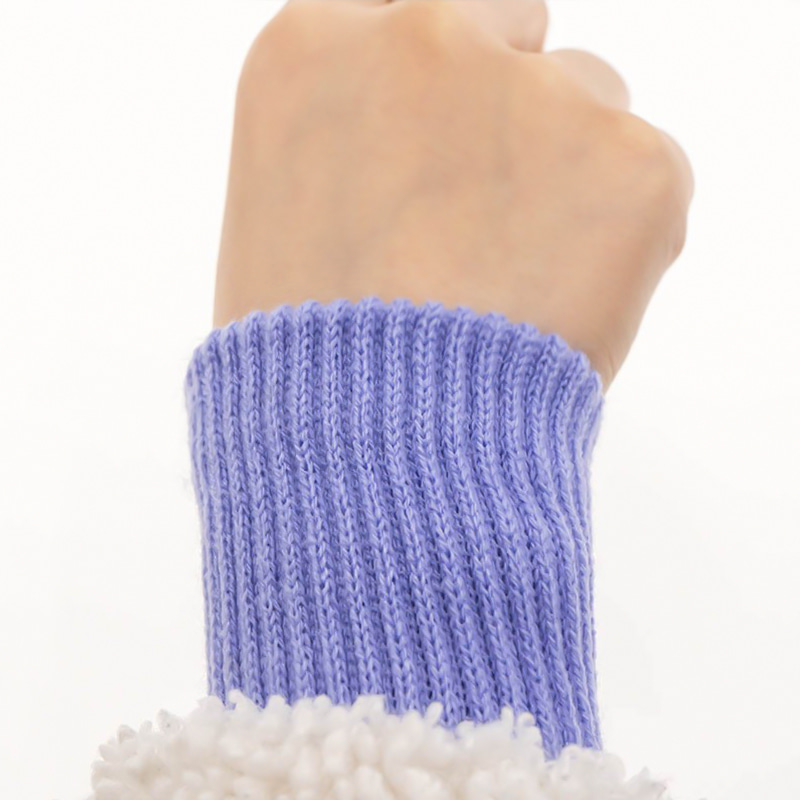Understanding the Core Functionality of Knitted Ribbed Stretch Seamless Cuffs
Knitted ribbed stretch seamless cuffs represent a significant advancement in textile and garment construction, focusing on delivering a superior fit and functional performance. The fundamental design incorporates a specific knitting technique that creates vertical ribs, which allows the fabric to expand and contract with remarkable elasticity. This inherent stretch is crucial for accommodating various wrist and ankle sizes comfortably without feeling restrictive. The seamless aspect of these cuffs is achieved through advanced circular knitting technology, which eliminates the traditional side seams. This absence of a seam not only enhances the comfort by removing a potential point of irritation and chafing against the skin but also improves the overall durability of the garment by distributing stress evenly across the entire cuff, thereby reducing the likelihood of tearing or fraying that often begins at a stitched seam.
The Critical Role of Seamless Design in Activewear and Outerwear
In the realm of activewear, the presence of seamless cuffs is a game-changer for both performance and comfort. During physical activities, any friction caused by traditional seamed cuffs can lead to discomfort and even skin abrasions, which seamless construction effectively mitigates. This smooth, uninterrupted interior surface glides smoothly against the skin, making it ideal for base layers and athletic tops where freedom of movement and minimal irritation are paramount. For outerwear, such as jackets and coats, seamless cuffs play a different but equally vital role. They act as a primary barrier against the elements. The tight, elastic nature of the knitted ribbing conforms closely to the body, preventing cold wind from traveling up the sleeves and helping to trap body heat inside the garment. This creates a microclimate that enhances the insulating properties of the entire piece, ensuring that warmth is retained effectively during colder weather conditions.
A Practical Guide to Maintaining the Elasticity and Shape of Knitted Ribs
Preserving the integrity and functionality of knitted ribbed cuffs requires adherence to specific care practices to prevent the common issues of stretching out or losing their rebound strength. The elastic fibers within the knit are sensitive to high heat, which can cause them to break down and permanently deform. Therefore, it is highly recommended to launder garments with these cuffs in cold or lukewarm water using a gentle cycle. The agitation of a regular or heavy-duty cycle can put undue stress on the knitted structure. When it comes to drying, air-drying flat is the single most effective method for maintaining the cuff's original shape and elasticity. If machine drying is necessary, selecting a no-heat or air-fluff setting is essential, as exposure to high heat from a standard dryer cycle will inevitably degrade the spandex or elastane components, leading to cuffs that become loose and baggy over time.
Exploring the Importance of Ribbed Structure for Thermal Insulation and Wind Resistance
The distinctive ribbed pattern is not merely an aesthetic choice; it serves a profound functional purpose in thermal management and protection. The ribs create small channels of trapped air close to the body. Still air is an excellent insulator, and this layer acts as a buffer against the external cold, significantly enhancing the garment's ability to retain natural body heat. This principle makes garments with ribbed cuffs exceptionally effective for thermal underwear and cold-weather gear. Furthermore, the density of the knit in a ribbed structure contributes directly to its wind-resistant capabilities. The tight interlooping of yarns leaves minimal space for air to pass through, forming a seal at the openings of sleeves and hems. This seal is crucial for maintaining the overall efficiency of a jacket or sweater, as it stops warm air from escaping and cold drafts from entering, ensuring consistent core temperature regulation.
Comparing Knitted Cuffs and Woven Cuffs in Garment Applications
The choice between knitted and woven cuffs fundamentally influences a garment's fit, feel, and function. Knitted cuffs, as discussed, are defined by their inherent elasticity and comfort. They are engineered to stretch and recover, making them the unequivocal choice for sportswear, casual wear, and any application where a close, flexible fit is desired. Their ability to move with the body provides unparalleled comfort and a modern, streamlined appearance. In contrast, woven cuffs, typically made from non-stretch fabrics and often fastened with buttons, zippers, or snaps, offer a very different set of characteristics. They provide a structured, formal look and are common on dress shirts, tailored coats, and some types of utility jackets. While they can be adjusted for fit, they lack the dynamic stretch of knitted cuffs and can feel restrictive during vigorous movement. The decision between the two hinges on the garment's intended use: knitted cuffs for dynamic movement and comfort, and woven cuffs for structure and formal aesthetics.


 English
English Español
Español






